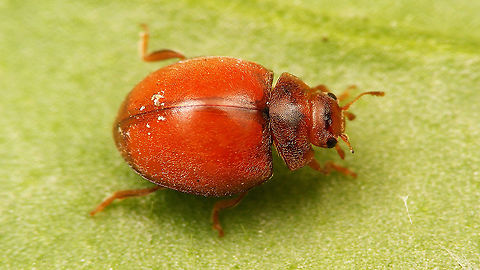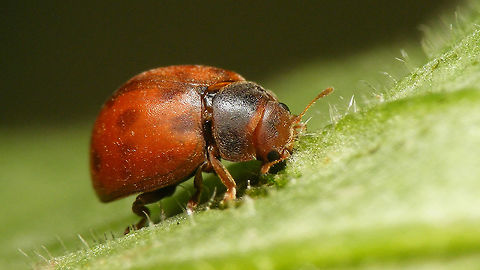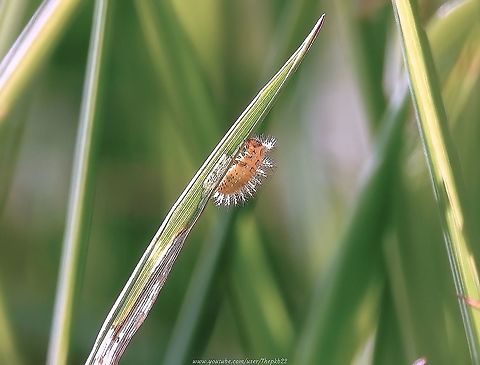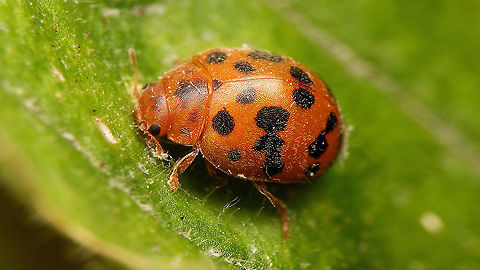
Appearance
The adult 24-spot is a small ladybird, usually 3 to 4 mm long. It has the quintessential ladybird shape, quite domed with the sides forming a smooth curve from head to pronotum to wing-cases.The wing-cases are covered with short pale hairs, and though these are hard to see without a hand lens, they give the ladybird a distinctive matt appearance. The ladybird is dark orange, including legs and antennae. There are black spots on the wing cases. These vary in number and size but there are often about 20 to 24 and usually no more than 26. Sometimes spots are joined together or they can be absent completely. Dark forms are very rare. Another extremely rare form has yellow spots.
Larvae are 4 to 6mm long and pale grey-green with darker speckles. They are covered with branched spines. These spines are also present in the pupa, enabling the pupa to secrete noxious alkaloids as a defence against predators.
There are five European species in the subfamily Epilachninae, all herbivorous and somewhat hairy. The 24-spot Ladybird can be distinguished from the similarly patterned Bryony Ladybird - ''Henosepilachna argus'' by its small size. ''Cynegetis impunctata'', another small ladybird, is browner and has no spots. It also has a black head and this separates it from the form of the 24-spot Ladybird without spots.
This ladybird usually has no wings under the elytra and these individuals are unable to fly. A study found no winged specimens in a UK sample whereas 40% of those from Hungary and Romania had wings. However, as even the winged specimens carried the gene that causes atrophy, it is thought that winglessness is a trend that will increase.

Distribution
This ladybird is an Old World species occurring across Europe, North Africa, European Russia, the Caucasus, Siberia, the Russian Far East, Belarus, Ukraine, Moldova, Transcaucasia, Kazakhstan, Middle Asia, Western Asia, Afghanistan, Mongolia, China, North and South Korea. It was introduced into North America some time last century with the first records from Pennsylvania in 1972. In Britain it is more common in the south.
Behavior
Adults can be found from late Spring until the Autumn. They appear commonly on flowers, especially Apiaceae. Eggs are laid in May and larvae develop in about six weeks. New generation adults usually are active until October or November.Larvae feed only on the mycelium of Erysiphales Also on these fungi on Poaceae, ''Astragalus'' and some species of the families Fabaceae and Boraginaceae) The insects carry spores of the fungi.
References:
Some text fragments are auto parsed from Wikipedia.
